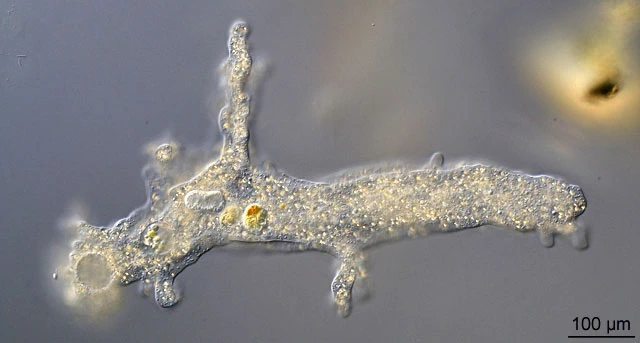
Amoeba proteus
Genus Amoeba Bory de St. Vincent, 1822
Diagnosis: locomotive cells commonly polypodial, with several tubular pseudopodia with hemispherical tips and usually hyaline caps; one pseudopodium dominant at one time, often with ectoplasmic ridges; monopodial in rapid locomotion; nucleus single, granular in most described species; resting cells irregularly rounded, floating form with long radiating pseudopodia; cytoplasm often with truncated bipyramidal crystals; posterior uroid morulate.
Ecology: Freshwater. In all kind of water types.
Key to the species:
| 1 | Nucleus large, mean 40 µm, discoid, often biconcave | A. proteus |
| – | Nucleus smaller, spherical, ovoid or compressed | 2 |
| 2 | Nucleus compressed spherical, ovoid or lens-shaped, mean 29 µm; crystals mainly squared | A. borokensis |
| – | Nucleus spherical, often slightly compressed; numerous bipyramidal crystals |

Amoeba proteus: A-B-C polypodial forms; D monopodium; C specimen with numerous crystals; E dividing stage (fission sphere); F bipiramidal crystal; G tile-shaped crystal; H four crystals in a row.